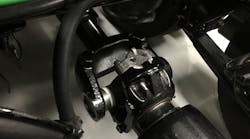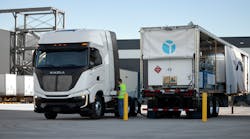On December 1, the North American lubricants industry witnessed its biggest specification overhaul in history with the launch of the new American Petroleum Institute (API) heavy duty diesel engine oils CK-4 and FA-4. After years in development, these new oils mark a significant step-change for the industry as it meets the Phase 2 Greenhouse Gas Emissions requirements to reduce carbon emissions and fuel consumption.
OEMs are also responding to this legislation by developing smaller, more efficient engines that can run on lower viscosity oils which, in turn, can deliver improved fuel economy.
Basic Differences
API CK-4 will offer backwards compatibility to the previous categories (CJ-4, CI-4, etc.), allowing use in the vast majority of older diesel engine vehicles while offering increased performance and protection gains, as well as the ability to extend the intervals required between oil changes.
API FA-4 is specifically designed for newer vehicles. These oils will have a lower viscosity, meaning less friction in the engine and a reduction in fuel consumption, while still offering increased levels of wear protection.
Future heavy duty fleet vehicles will be designed to comply with this specification to offer even higher levels of efficiency.
The crucial point to be aware of is FA-4 oils have limited backwards compatibility, as they are specifically intended for newer engines designed to meet the new legislation around emissions and fuel economy. As many older engines are not designed to operate with such lower viscosity oils, using FA-4 oils in these engines could damage hardware if used for an extended period of time.
The new oil classifications will not affect every business the same and some fleets may only see a small impact. Therefore, the decision about which oil is most suitable is dependent on the age of the truck and the ability of the engine to run lower viscosity oils.
For example, a fleet which operates with older equipment and different engine types may simply need to transition from the current CJ-4 oils to CK-4 oils. For those fleets with a mix of older and newer equipment, and an ambition to realize the improvements that will come with the new classification, a stock of both CK-4 and FA-4 products may be best.
We strongly advise fleets to consult their engine/vehicle OEM manuals to ensure that they are using the correct oil for their vehicle.
API has released new Service Symbols, known as donuts, which clearly distinguish between the two oil sub-categories. We recommend visiting www.api.org to get familiar with the different symbols.
Expectations
Our expectation is that the majority of OEMs will recommend and/or allow CK-4 oils as the next step up from CJ-4 due to their backwards compatibility. As the FA-4 oils have specifically been designed for 2017 on-highway engines, we expect to see adoption of this category build from January onwards as OEMs release their recommendations.
We anticipate the integration of API FA-4 oils in fleets’ stock will then increase exponentially each year as fleets see the potential cost benefits they can achieve, and OEMs design improved engines – often downsized and operating at higher temperatures – to meet legislation standards.
Brian Humphrey is OEM technical liaison for Petro-Canada (lubricants.petro-canada.ca). It blends and packages more than 350 different lubricants, specialty fluids and greases that are exported to more than 80 countries on six continents.


